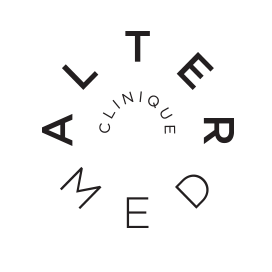Florence Charbonneau-Dufresne
Montreal physiotherapy
A large portion of the population suffers from frequent headaches.
Whether it is migraines, post-concussion symptoms
or simply a headache,
physiotherapy can help.
. . . . . . . . . . .
Many origins of headaches
Headaches can have many causes.
A consultation with a physiotherapist will first determine the cause of your headaches.
Although the causes are varied, the physiotherapist will still be able to provide some relief from your symptoms through manual techniques and exercises.
. . . . . . . . . . .
Tension headaches
This first category comes from muscular tension in the neck muscles. This is the most common source of headaches.
The neck muscles can cause referred pain in the head.
They can appear following prolonged work positions or trauma, for example following a car accident or secondary to poor office posture.
They last on average from 30 minutes to 7 days and are not increased by physical activity.
They are generally felt on both sides of the head, as pressure, tension or tightness.
In physiotherapy, relaxation of tense muscles helps to reduce symptoms and correction of provocative postures prevents recurrence of the problem.
. . . . . . . . . . .
Cervicogenic headaches
They are caused by a joint dysfunction between the head and the neck, i.e. a lack of mobility of the joints between the head and the neck (C0-C1- C2) or even a lack of mobility of this region due to dural tension.
The dura mater is the envelope of the spinal cord, which is located in the spinal column and whose attachment is at the base of the skull.
Increased tension in the dura mater, which may be caused by another mobility problem elsewhere in the spine (e.g., lower or upper back), can pull on the head and decrease mobility between the head and neck.
A physiotherapist will be able to assess the mobility between the head and neck and use manual treatment techniques to increase mobility and home exercises to prevent recurrence of the problem.
Symptoms of cervicogenic headaches include head pain that is most often unilateral, although it can be bilateral if the neck lacks mobility on both sides.
The pain is episodic and of variable duration. These headaches are reproduced by head movements and often associated with decreased neck mobility.
They can be present following a ''whiplash'' (pain in the neck following a sudden movement of the neck, especially during a car accident) or a concussion.
. . . . . . . . . . .
Vascular headaches
They are secondary to a transient vasodilatation of the blood vessels of the head.
They present themselves as a pulsating pain in the head.
They are relieved by non-steroidal anti-inflammatory drugs (e.g. ibuprofen).
They are of systemic rather than mechanical origin, as they are caused by the bloodstream.
. . . . . . . . . . .
Migraines
They are associated with a unilateral pulsating pain that moves from one side to the other, of moderate to severe intensity.
They are accompanied by other symptoms: nausea, intolerance to light or noise.
They are reduced by medication against migraines.
They are generally disabling and can prevent people from participating in their daily activities.
Migraines have many causes: dietary, hormonal, etc.
The main treatment for this type of headache is medication prescribed by your doctor.
. . . . . . . . . . .
Headaches originating from the jaw
The temporomandibular joint, or jaw, is located very close to the joint between the head and neck.
It can therefore also cause head pain. The symptoms are therefore more related to the opening and closing of the mouth.
A physiotherapist who specializes in the evaluation and treatment of the jaw will be able to help you manage the mechanical cause of the pain in the jaw and also in the head.
. . . . . . . . . . .
Mixed headaches
Because of the similarity between the symptoms of migraines and cervicogenic headaches, it is possible that what you think is a migraine is actually a cervicogenic headache.
In addition, all of the above types of headaches can occur at the same time.
In fact, that's why physiotherapy can help you even with vascular headaches or migraines, because part of the problem is probably a lack of mobility in the craniovertebral region, between the head and neck.
However, with vascular headaches or migraines, physiotherapy should be combined with the appropriate medication to ensure optimal relief of symptoms.
. . . . . . . . . . .
Florence Charbonneau-Dufresne, Physiotherapist Ph.t
florence.charbonneau-dufresne@cliniquealtermed.com


